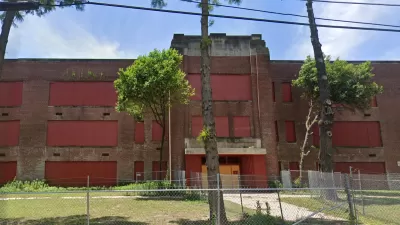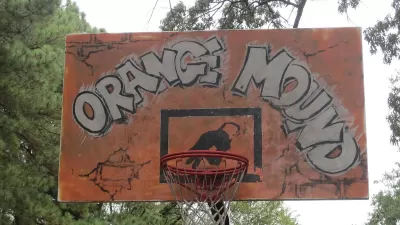In an interview with Crosstown Concourse's Todd Richardson, Thriving Cities explores the challenges of revitalizing and transforming Memphis' old Sears Roebuck Building.
On February 21, 2015, Crosstown Concourse officially broke ground in Memphis, TN. Originally built in 1927 and known as the Sears Crosstown Building, it operated as a Sears store for over 60 years until becoming vacant in the 1990s. Thanks to the recent efforts of many people such as Todd Richardson, new energy and investment has been poured into its revitalization. In an interview with Thriving Cities, Todd, who has been at the forefront of the project, highlights his work and hopes for Crosstown Concourse.
Thriving Cities (TC): Todd, describe your initial interest and motivations in getting involved with a project like Crosstown Concourse?
Todd Richardson (TR): What initially peaked my interest was a simple conversation. "Wouldn't it be cool if…?" It was 2009, and I had recently moved to Memphis to become a professor at the University of Memphis. While I love academia, it quickly became clear to me that I needed to get involved in the community in a more meaningful way. At the time, I didn't know what that might look like. But as an art historian, I understood the power of art to engage minds and build community. At 1.5 million square feet, the Sears Crosstown distribution center is the largest commercial building in the city of Memphis—by a long shot. It’s bigger than 25 football fields, bigger than the Chrysler Building in New York. But in spite of its art-deco beauty and central location, it had been abandoned for almost 20 years. I was talking with the building's owner. We said, "What if something amazing could happen at Sears Crosstown? And what if art were the catalyst?" That was enough to engage my research training, and I set out to determine whether anything like this had ever been done. Turns out, the power of art to spur community development has far surpassed my expectations.
FULL STORY: Memphis and the Crosstown Concourse — An Interview with Todd Richardson

Alabama: Trump Terminates Settlements for Black Communities Harmed By Raw Sewage
Trump deemed the landmark civil rights agreement “illegal DEI and environmental justice policy.”

Study: Maui’s Plan to Convert Vacation Rentals to Long-Term Housing Could Cause Nearly $1 Billion Economic Loss
The plan would reduce visitor accommodation by 25% resulting in 1,900 jobs lost.

Planetizen Federal Action Tracker
A weekly monitor of how Trump’s orders and actions are impacting planners and planning in America.

Wind Energy on the Rise Despite Federal Policy Reversal
The Trump administration is revoking federal support for renewable energy, but demand for new projects continues unabated.

Passengers Flock to Caltrain After Electrification
The new electric trains are running faster and more reliably, leading to strong ridership growth on the Bay Area rail system.

Texas Churches Rally Behind ‘Yes in God’s Back Yard’ Legislation
Religious leaders want the state to reduce zoning regulations to streamline leasing church-owned land to housing developers.
Urban Design for Planners 1: Software Tools
This six-course series explores essential urban design concepts using open source software and equips planners with the tools they need to participate fully in the urban design process.
Planning for Universal Design
Learn the tools for implementing Universal Design in planning regulations.
Caltrans
Smith Gee Studio
Institute for Housing and Urban Development Studies (IHS)
City of Grandview
Harvard GSD Executive Education
Toledo-Lucas County Plan Commissions
Salt Lake City
NYU Wagner Graduate School of Public Service





























